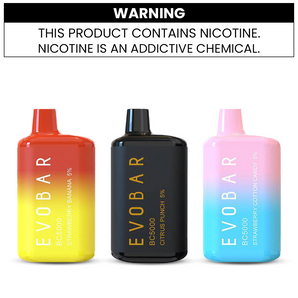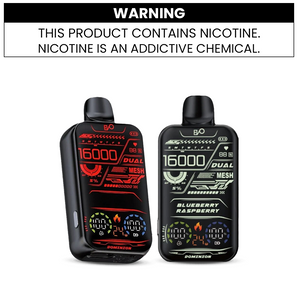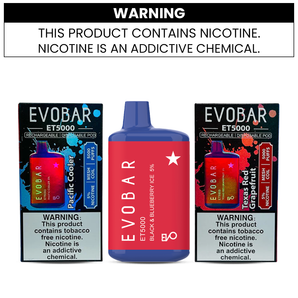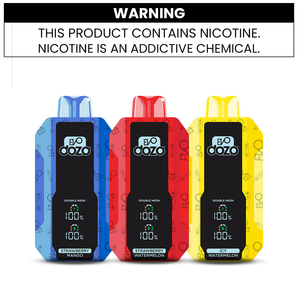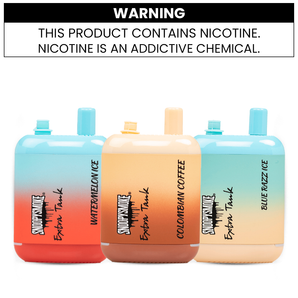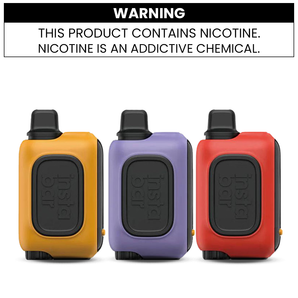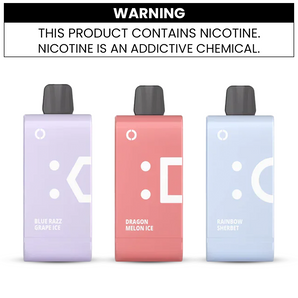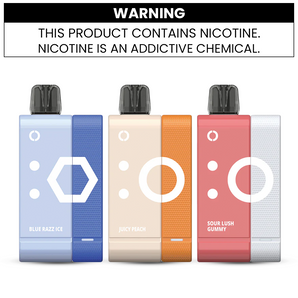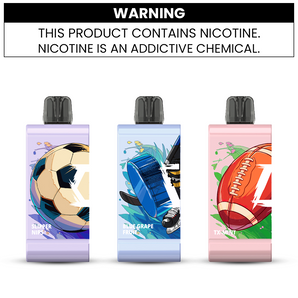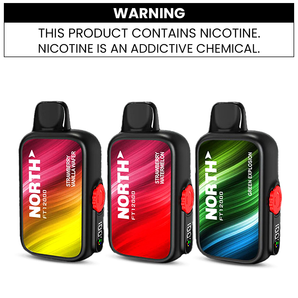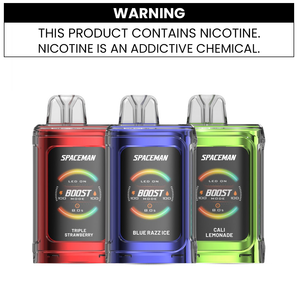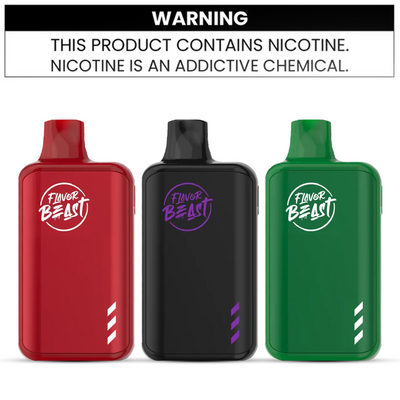How Harmful Is Vaping? A Comprehensive Look At The Risks And Realities
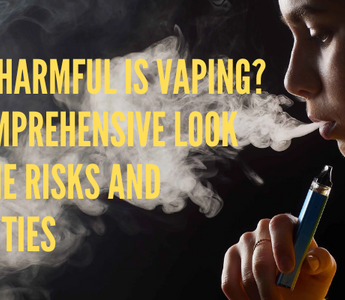
As vaping continues to surge in popularity—especially among young adults and former smokers—so do questions around its safety. Is vaping really a safer alternative to smoking, or is it just another habit with long-term consequences? While many see e-cigarettes and disposable vapes as a "healthier" option, the truth is nuanced.
In this blog, we’ll explore the health risks, scientific findings, and public concerns around vaping. We’ll also break down the types of vapes, what’s inside them, and whether their harm is comparable to that of traditional cigarettes.
What Is Vaping, Exactly?
Vaping involves inhaling an aerosol (commonly referred to as "vapor") that is produced by heating a liquid known as e-liquid or vape juice. This liquid typically contains nicotine, flavorings, propylene glycol, and vegetable glycerin.
Devices vary from simple disposable vapes to more advanced rechargeable mods and pod systems, but the mechanism is largely the same: liquid is heated by a coil and turned into vapor, which the user inhales.
Why People Vape: The Perceived Benefits
Many adults turn to vaping for one of the following reasons:
-
To quit smoking: Vapes are marketed as safer alternatives to cigarettes.
-
For flavor variety: There are thousands of flavors of vape juices, and vaping is thus more pleasant than smoking.
-
For convenience: Disposables are portable, they do not smell, and they are light in weight.
-
Lower cost: Vaping can prove to be cheaper in the long term as compared to purchasing cigarettes daily.
However, these are the perceived benefits, which cannot erase possible risks. Let us have a look at the data.
Is Vaping Safer Than Smoking?
It is not disputed by the Centers for Disease Control and Prevention (CDC) and World Health Organization (WHO) that vaping is a less harmful activity than traditional smoking.
There are more than 7,000 chemicals that are released when tobacco burns in a cigarette, many of them carcinogenic and toxic. Compared to that, vapes do not burn tobacco—so you avoid tar and certain toxins. Nicotine, however, remains present, and other harmful chemicals such as heavy metals, volatile organic compounds, and diacetyl, which is a chemical that is linked to lung disease, may also be present in vape aerosols.
Read our detailed blog about Switching from Cigarettes to Vaping: A Complete Guide to Nicotine Control
Key Comparison:
When comparing traditional cigarettes to vaping, several important distinctions emerge. Cigarettes contain over 7,000 chemicals—many of which are toxic and carcinogenic—due to the combustion of tobacco. In contrast, vaping eliminates combustion, which means there’s no tar production and generally fewer harmful substances involved. Both, however, contain nicotine, which is addictive and can affect cardiovascular and neurological health. Before, it was regarded as a cleaner option because it doesn't make smoke or ash, and secondhand exposure is believed to be lower. Vape aerosols still can harbor toxic chemicals such as heavy metals and volatile organic compounds, in fact. While vaping may be a less harmful alternative for adult smokers, it is not entirely risk-free and should not be considered safe, especially for non-smokers or youth.
Health Risks of Vaping: What We Know So Far
While long-term studies are ongoing, current research points to several health concerns associated with regular vaping:
1. Respiratory Effects
-
Vaping can cause airway irritation, coughing, and shortness of breath.
-
Popcorn lung (bronchiolitis obliterans) has been linked to diacetyl, found in some flavored vape liquids.
-
Increased risk of asthma symptoms in teens and children exposed to secondhand vapor.
2. Cardiovascular Risks
-
Nicotine raises heart rate and blood pressure.
-
Studies suggest a potential link between vaping and heart disease, especially in people with existing conditions.
3. Nicotine Addiction
-
One vape pod can contain as much nicotine as a pack of cigarettes.
-
A single vape pod has as much nicotine content as a packet of cigarettes.
-
The frequent application may develop addiction, withdrawal, and tolerance.
4. EVALI (E-cigarette or Vaping-Associated Lung Injury)
-
A major outbreak in 2019 caused thousands of hospitalizations and over 60 deaths in the U.S.
-
Linked to THC-containing vapes with vitamin E acetate but raised concerns about vaping in general.
What’s in Vape Juice That Could Be Harmful?
Most people think vape juice is just water vapor with some nicotine, but that’s not entirely true. Here's what you’re inhaling:
-
Nicotine: Considered addictive; influences the brain process, heart rate, and blood pressure.
-
Propylene Glycol (PG): This is used to generate the vapor; it is often thought to be safe, but it can result in throat irritation.
-
Vegetable Glycerin (VG): Gives vapor a thickness; may cause gunk in the lungs.
-
Flavorings: Certain ones have such agents as diacetyl, benzaldehyde, and acetoin, which are toxic to the lungs.
-
Heavy Metals: Leaching of coil (nickel, tin, lead).
While each of these ingredients is usually safe when eaten, inhaling them is a different story and may cause unknown long-term effects.
Youth and Teen Concerns: A Growing Epidemic
One of the most alarming trends is the rise of vaping among teens and young adults. Sleek designs, sweet flavors, and discreet use have made vapes especially appealing to minors.
Risks to Teens:
-
Delayed brain development due to nicotine.
-
Increased likelihood of transitioning to cigarettes later.
-
Behavioral and learning issues.
-
Greater risk of mental health concerns such as anxiety and depression.
Many youth-oriented public health campaigns now focus on reversing this trend.
Are Some Vapes More Harmful Than Others?
Yes. Not all vape brands or devices are created equal.
-
Unregulated or counterfeit vapes may contain dangerous chemicals or poor-quality components.
-
Disposable vapes often have higher nicotine levels and may appeal more to younger users.
-
THC vapes from unlicensed sources can be especially risky due to untested additives.
Choosing reputable, tested brands and avoiding black market products is critical for harm reduction.
What the Science Says: Long-Term Impact Still Unknown
Because vaping is relatively new, no long-term studies have shown its full health effects. However, early data suggest vaping can cause damage to the lungs and cardiovascular system, and that continued exposure may increase the risk of chronic disease over time.
Most medical professionals agree on this: vaping should not be considered completely safe, and more research is needed to assess its impact over decades of use.
What Experts Recommend
-
If you don’t smoke, don’t start vaping.
-
If you do smoke, vaping may be a harm-reduction tool, but it should ideally be used as a transitional aid toward quitting completely.
-
If you already vape, choose reputable products, avoid high nicotine strengths, and aim to gradually reduce usage.
Tips for Safer Vaping
-
Avoid homemade or modified devices.
-
Only use e-liquids from reputable brands.
-
Opt for lower nicotine strengths to reduce dependency.
-
Don’t “chain vape”—give your device and lungs time to rest.
-
Store devices and e-liquids away from children and pets.
-
Stay informed on regulatory updates and recalls.
Conclusion: So, How Harmful Is Vaping?
Vaping is less harmful than smoking, but it’s far from safe. The risks—particularly to youth, non-smokers, and people with existing health conditions—are real and growing. The safest option will always be not to use nicotine products at all.
Still, for those who currently smoke, vaping may serve as a short-term harm reduction tool, especially if paired with a plan to quit entirely. Public health experts continue to monitor its impact, and ongoing studies will help paint a clearer picture in the years ahead.

